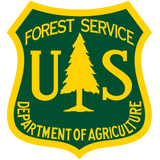
Coir Mesh Mat - Erosion Control (Biodegradable) - Coconut Fibers - 4 ft Wide (Lasts 2-5 yr)
Control erosion anywhere with coir matting rolls!
Stop soil erosion on slopes, hillsides, riverbanks, and oceanfront properties with Sandbaggy Coir Matting Rolls! Our Coconut Matting provides 2-5 years of erosion control protection, even on steep slopes (up to 2:1) and areas without vegetation. This durability makes it five times longer-lasting than standard erosion control products like jute netting or straw blankets.
Made from 100% natural coconut fibers, Sandbaggy Coconut Erosion Control Mat supports sustainable practices. These biodegradable mats naturally decompose after 2-5 years, enriching the soil with nutrients to promote vegetation growth. Whether you’re stabilizing a riverbank, protecting a slope, or using coconut matting for erosion control, our high-strength coir fiber matting is the eco-friendly solution you can rely on.
- Meets or exceeds DOT requirements for an erosion control product.
- No minimum order quantity requirement
- Standard 480 gram (Heavy Duty 700 gram available)
Specs
-
Gram (Weight): 480 gram (standard)
-
Material: 100% coconut fiber
- No synthetic materials
- 100% biodegradable: no cleanup necessary, eco-friendly
- Approximate Opening Size (Holes): 1 Inch by 1 Inch
- Staples Required Per Roll: 200-250 Landscape Staples
- Slope: Up to 2:1
-
Landscape Supply Type: Erosion Control
Features
- Superior Erosion Control: Coir matting effectively stabilizes soil and controls erosion, even on steep slopes (up to 2:1 gradient).
- Long-Lasting Durability: Lasts 4-10 times longer than straw blankets or jute, providing 2-5 years of reliable soil protection, and reducing replacement frequency.
- High Tensile Strength: Built with strong bristle twine, allowing the matting to withstand harsh weather conditions.
- Multiple Applications: Suitable for both land and water-based erosion challenges, including steep slopes and waterfront properties.
- Cost-Effective: Offers durable erosion control without breaking the budget.
- Sustainable Solution: Sandbaggy coir matting is 100% biodegradable, offering an eco-friendly erosion control option compared to synthetic alternatives.
- Eco-Friendly: No synthetic materials, contributing to a greener environment.
- Standard 480 gram (Heavy Duty 700 gram available)
Case Studies
Slope Erosion Control On A Malibu Nature Preserve
After multiple wildfires and big rainstorms, erosion became an increasingly larger issue at the Malibu Nature Preserve. They decided to order 10 rolls of this Coir Mat and cover about 6000 square feet of exposed soil. After installation, this Coir Mat has stopped erosion on their hillsides.
How Sandbaggy Coir Mat Stopped Soil Erosion on a Steep Hillside
Our coir matting rolls are so easy to install, it only took this customer 2 hours to install it on a steep slope in her yard.
FAQ’s
What is Coir Mat?
A coir mat is a natural, biodegradable erosion control product made from coconut fibers. It helps stabilize soil, prevent erosion, and support vegetation growth in areas like slopes, riverbanks, and wetlands.
What is the purpose of coconut matting?
The primary purpose of coconut matting is to prevent soil erosion and support vegetation establishment. It is commonly used in challenging environments, such as steep slopes, riverbanks, shorelines, and areas prone to erosion.
How long does coconut matting last?
Coconut matting typically lasts between 2 to 5 years, depending on environmental conditions. During this time, it provides effective erosion control and eventually biodegrades, adding organic matter to the soil.
Is coir matting the same as coconut matting?
Yes, coir matting and coconut matting are the same product. Both are made from natural coconut fibers and serve as biodegradable solutions for erosion control.
How does coir matting prevent erosion?
Coir matting prevents erosion by acting as a protective layer that cushions the soil from the impact of rain. Its mesh structure helps hold the soil in place, reducing displacement and promoting stability, even on steep slopes.
What is the difference between the types of rolls you sell?
| Roll type |  Coir Mat |
  Orange landscape fabric |
 Burlap fabric |
||
| Material | Jute | Coconut fiber | Polypropylene woven fabric | Burlap | |
| Length | 225 ft | 165 ft | 300, 500 ft | 100, 300, 500 ft | 300 ft |
| Width | 4 ft | 4 ft | 3 ft | 3 ft | 3.33 or 6 ft |
| Coverage | 900 sq. ft | 1,070 sq. ft | 900 or 1,500 sq. ft | 300 - 1,500 sq. ft | 1,000 or 1,800 sq. ft |
| Price/sqft (1,000 sq. ft) | $0.17 | $0.30 | $0.08 | $0.09 | $0.15 |
| Purpose |
Stabilize soil Control erosion |
Beach / shoreline erosion Hillside erosion |
Weed barrier Silt fence |
Weed barrier Silt fence |
Table / aisle runner Floor mats Tree / shrub protection |
| Life | 1-2 years | 2-5 years |
12 months - 40 yrs (depending on Sun exposure) |
12 months - 40 yrs (depending on Sun exposure) | N/A |
| Anchored using | 6-inch sod staples | N/A | |||
| Biodegradable? | Yes | Yes | No | No | Yes |
Installation Instructions
- Prepare the Soil: Rake the area to remove stones and clods. For larger jobs, use a Bobcat or tractor. Avoid compacting the soil. If using fertilizer, add it before grading.
- Distribute Seeds and Mulch: Evenly spread seeds and mulch (if needed) over the prepared soil.
- Apply Coir Matting: Unroll the coir matting down the slope or along the direction of water flow.
- Dig a Trench: Create a trench at the top of the slope, 6 inches deep and 6 inches wide.
- Install Matting in Trench: Place the coir matting in the trench, extending at least 12 inches of the roll above the trench. Secure with staples spaced 1 foot apart.
- Backfill and Compact: After securing the trench, backfill and compact the soil inside.
- Cover the Trench: Bring the extra 12 inches of coir matting down to cover the trench, and secure with additional staples, spaced 1 foot apart.
- Staple the Matting: Secure the matting to the ground by placing staples 18-24 inches apart, ensuring all staples are flush with the soil.
- Overlap Edges: Always overlap the edges by 2-6 inches. At the end of each roll, fold back 4-9 inches and overlap it by 4-8 inches over the next roll. Securely staple both layers to the ground.
Our Customers
Our sandbags, burlap bags, and landscape staples are trusted by
 Marine Corps
Marine Corps
 US Army
US Army
 Park Service
Park Service
 Forest Service
Forest Service
 Red Cross
Red Cross
 Walmart
Walmart




































